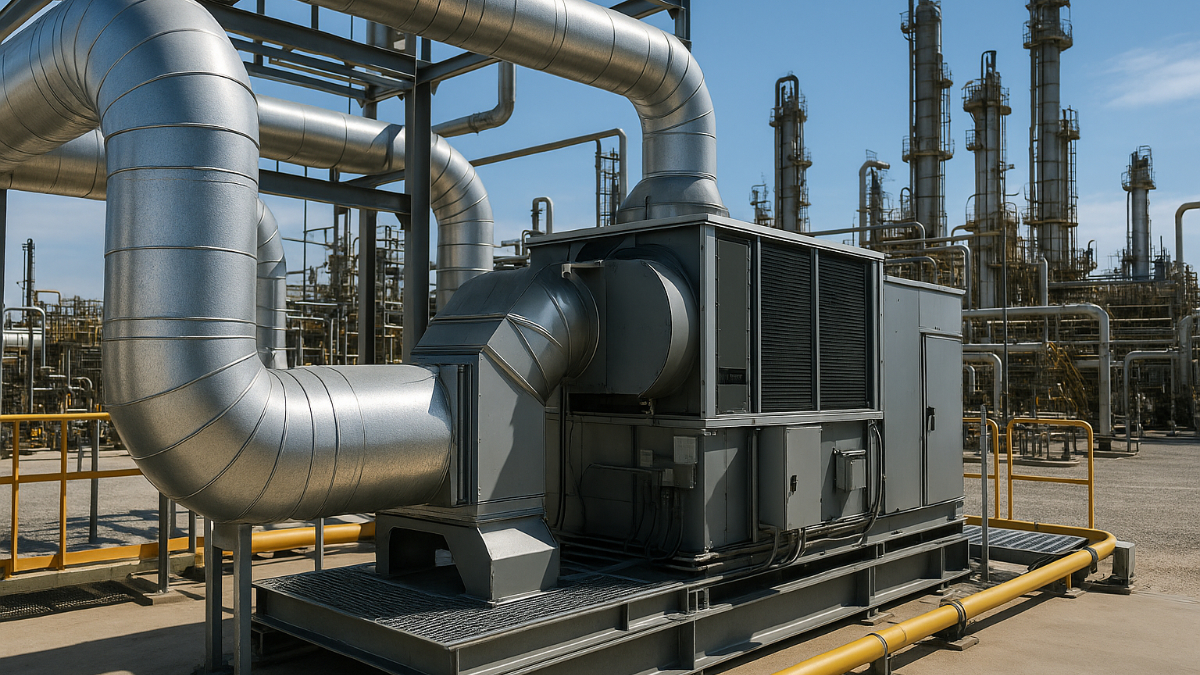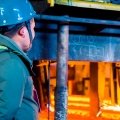West Texas faces a delicate balance: extreme heat, 24/7 critical operations, and constant pressure on operational costs, capital investments, and resilience. In this context, industrial HVAC systems have gone from being mere “comfort tools” to becoming strategic infrastructure for protecting processes, personnel, and equipment.
The problem: most plants still follow reactive or rigid preventive maintenance, lack sufficient sensors, operate with air duct leaks, and don’t have a predictive analytics framework to anticipate failures, reduce energy consumption, and prevent unplanned shutdowns.
This guide lays out the 2025 action plan to transition into Predictive HVAC Maintenance, supported by IIoT technologies, data analytics, and light AI, with a practical, local, and applicable approach. And yes—it includes quick, low-cost actions like professional air duct sealing, where Doctor Frío A/C & Heating can give you an immediate advantage.
Want a HVAC diagnosis + predictive roadmap for your plant in West Texas? Let’s talk: HVAC Services for the Oil and Gas Industry in West Texas | Professional Duct Sealing Services in West Texas.
1) The Hidden Problem in Industrial HVAC for Oil & Gas
1.1. Duct Leaks = Money Lost
A poorly sealed duct can lose a significant portion of conditioned air, forcing equipment to work harder, increasing energy usage, and compromising temperature control in critical areas. Many plant managers consider it “normal,” but it’s not—it’s a quick-return investment when properly addressed.
1.2. Reactive Maintenance = Costly Downtime
When the HVAC system fails in a key area (electrical room, control center, lab, compressors, or thermally sensitive processes), the cost of downtime can skyrocket. Without proper sensors and predictive models, the plant finds out too late.
1.3. No Data = No Decisions
Without data on temperature, airflow, vibration, pressure, power usage, damper position, or VFD performance, there’s no way to calculate useful KPIs like kWh per ton of cooling, mean time between failures, or justify investments with a solid ROI.
2) What Is Predictive HVAC Maintenance and Why Act Now?
Predictive HVAC Maintenance means using sensors, remote monitoring, data analytics (including AI), and wear models to anticipate failures, optimize energy use, and plan interventions before disruptions occur.
2.1. Reactive vs. Preventive vs. Predictive
- Reactive: “The system broke—go fix it!” High downtime, chaos, unpredictable costs.
- Preventive: “We change filters and check refrigerant every X months.” Better, but you might replace components too early—or too late.
- Predictive: Data-driven decisions. Detect anomalies (temps, vibrations, leaks, power spikes), predict failure points, and plan maintenance without disrupting operations.
2.2. Key Benefits
- Up to 30% energy savings through precision control, leak detection, and setpoint optimization.
- Less unplanned downtime, longer equipment lifespan.
- Extended lifecycle of critical HVAC assets.
- Stronger ROI justification with measurable KPIs in months, not years.
3) The “Minimum Viable Tech Kit” for Your West Texas Plant
No need for a million-dollar data cloud or a team of data scientists. Here’s the starter tech stack most plants use:
3.1. Essential Sensors
- Temperature and humidity in critical zones
- Airflow and pressure in ducts and pressurized areas
- Vibration and amperage in motors, compressors, and fans
- Real-time energy consumption (meters on chillers, AHUs, VFDs)
3.2. Secure IIoT Communication Devices
Used to collect data, send it to a monitoring platform (local/cloud), and trigger automatic alerts.
3.3. Light AI Analytics Platform
- Dashboards for maintenance teams
- Simple predictive models based on trends and thresholds
- Smart alerts, e.g.: “abnormal vibration + increased power use = likely failure in X days”
3.4. Integration with Maintenance Management System
Automates work order creation, prioritizes tasks, and logs a full equipment history.
4) KPIs and Return on Investment (ROI)
4.1. Key KPIs
- kWh per ton of cooling
- Duct leakage percentage (before vs. after sealing)
- Mean Time Between Failures (MTBF) for HVAC units
- Mean Time To Repair (MTTR)
- Downtime cost per hour for HVAC failures
- Energy efficiency ratio
- ROI per action (duct sealing, control tuning, etc.)
4.2. Formula to Estimate Energy Savings
Savings ($) = (Baseline usage – Optimized usage) × Avg. electricity rate
Calculate by component: chillers, handlers, pumps, fans, compressors
4.3. Typical Payback Periods
- Duct sealing: return in a few months
- Monitoring + analytics: 6 to 18 months, depending on scale and downtime reduction
5) Low-Cost, High-Impact Actions You Can Start Today
Need fast results? Prioritize:
- Professional duct sealing
- VFD calibration
- Control and setpoint optimization
- Basic sensor installation
- Condition-based maintenance
6) Real-World Case Study – Oil & Gas Industrial Plant
Before
- 3 chillers with high energy use
- Duct leaks in multiple areas
- No vibration or energy monitoring
- 3 HVAC failures per year; $14,000/hour downtime cost
Actions Taken
- Duct sealing
- Installed vibration and power sensors
- Launched a monitoring platform
- Tuned controls and logic
Results (after 9 months)
- −22% energy consumption
- −18% HVAC downtime
- ROI: 11 months
- MTBF: +24%
- Duct leakage: from 18% to <5%
7) Predictive HVAC Checklist: 12 Steps from Reactive to Smart
- HVAC audit
- Calculate downtime costs per area
- Identify and seal air duct leaks
- Define baseline KPIs
- Select critical sensors
- Install secure IIoT gateways
- Launch a monitoring dashboard
- Activate predictive models
- Connect to CMMS
- Test and fine-tune alerts
- Measure ROI quarterly
- Scale to more equipment or sites
8) Compliance and Safety
- Formal lockout/tagout procedures
- Data logging and traceability
- Relevant standards: ASHRAE, ISA, ISO
9) Frequently Asked Questions – Plant Managers in Midland & Odessa, TX
What’s the typical ROI for predictive HVAC maintenance?
Between 6 and 18 months, especially when combining duct sealing, sensors, and smart controls.
Which sensors should I install first?
Temperature, airflow, pressure, energy use, vibration, and current.
What should I do first—seal ducts or upgrade controls?
Start with duct sealing. It’s fast, low-cost, and boosts system stability.
Do I need advanced AI to get started?
No. Start with basic alerts. Build from there.
Which KPIs should I report to management?
kWh/ton, duct leakage %, MTBF, monthly savings, and ROI by initiative.
10) What Are the Next Steps for Predictive HVAC Maintenance?
- Request a specialized audit from Doctor Frío A/C and Heating
- Prioritize by criticality and downtime costs
- Start with duct sealing
- Install key sensors and begin data collection
- Scale predictive approach over time
Let’s Talk
Doctor Frío A/C & Heating can help you through every step—from quick wins like duct sealing and VFD tuning to a full custom predictive HVAC plan. Ready to turn your HVAC system into a smart investment?



